Singapore is a true food lover’s paradise, offering a rich tapestry of flavors that reflect the country’s multicultural identity. With influences from Chinese, Malay, Indian, and Peranakan cuisine, Singapore’s food culture is as diverse as its people. From bustling hawker centres to high-end restaurants, local food is a central part of daily life and a source of national pride.
This guide will take you through some of the must-try dishes, giving you a taste of Singapore’s rich culinary heritage. Whether you’re an adventurous foodie or simply curious, there’s something for everyone.
A Myriad of Flavors and Cuisine in Singapore

When it comes to food in Singapore, every bite tells a story—one shaped by the diverse cultures that have called this island home. The rich blend of Chinese, Malay, Indian, and Peranakan influences is what makes it so special and unique.
Chinese Influence
Chinese culture has had a profound impact on Singapore’s food scene, especially with its focus on rice, noodles, and stir-fried dishes. One of the most iconic Chinese-inspired dishes you’ll find here is Hainanese Chicken Rice. Simple yet flavorful, this dish is a national favorite and a must-try for any visitor. Another popular choice is Char Kway Teow, a smoky stir-fried flat noodle dish packed with seafood, eggs, and Chinese sausage—rich, bold, and comforting.
Malay Influence
The Malay influence brings vibrant spices and rich flavors to the table. Dishes like Nasi Lemak, a fragrant coconut rice dish served with sambal, fried fish or chicken, and crispy anchovies, is a beloved local favorite. Satay, skewers of marinated meat grilled to perfection and served with peanut sauce, is another prime example of Malay culinary influence that has become a staple in Singapore’s hawker centres.
Indian Influence
Indian cuisine adds depth and complexity with its use of aromatic spices and hearty ingredients. Roti Prata, a flaky, pan-fried flatbread served with curry, is a popular breakfast or supper dish that’s both delicious and satisfying. Fish head curry, a blend of South Indian spices with tender fish, represents the bold, spicy side of Indian flavors that many locals love. And let’s not forget Teh Tarik, the iconic pulled tea that pairs perfectly with spicy food.
Peranakan Influence
A fusion of Chinese and Malay cultures, Peranakan cuisine brings its own unique twist to Singapore’s food landscape. Laksa, a spicy noodle soup with coconut milk, shrimp, and cockles, is the epitome of this culinary marriage—rich, creamy, and deeply satisfying. Another favorite is Ayam Buah Keluak, a slow-cooked chicken dish made with the black keluak nut, offering an earthy, tangy flavor that’s truly one-of-a-kind.
Must-Try Local Dishes
Hainanese Chicken Rice

Hainanese Chicken Rice is often referred to as Singapore’s unofficial national dish, and it has roots in Hainan, China. Brought over by early Chinese immigrants, it evolved over the years into the beloved dish we know today.
Traditionally, Hainanese Chicken Rice is prepared by poaching a whole chicken to retain its tender, juicy texture, and then serving it with fragrant rice cooked in chicken stock and garlic. The dish is completed with a trio of sauces: garlic chili, soy sauce, and a touch of ginger paste.
For those seeking the best in town, look no further than Tian Tian Chicken Rice at Maxwell Food Centre. This humble stall rose to international fame when even celebrity chefs like Anthony Bourdain praised the flavour of their perfectly tender chicken and fragrant rice.
Roti Prata

Roti Prata is a testament to Singapore’s Indian influence. Originally an Indian subcontinent dish, this flaky, pan-fried flatbread has become a breakfast staple in Singapore, enjoyed by locals of all backgrounds. The word “prata” comes from the Hindi word paratha, meaning flatbread.
Prata comes in a variety of forms—from the simple, traditional plain prata to those stuffed with egg, cheese, or even banana for a sweet twist. Typically, it’s served with a side of curry or sugar, depending on your preferences. The egg prata paired with a rich fish curry is particularly popular among locals and expats alike.
Kaya Toast
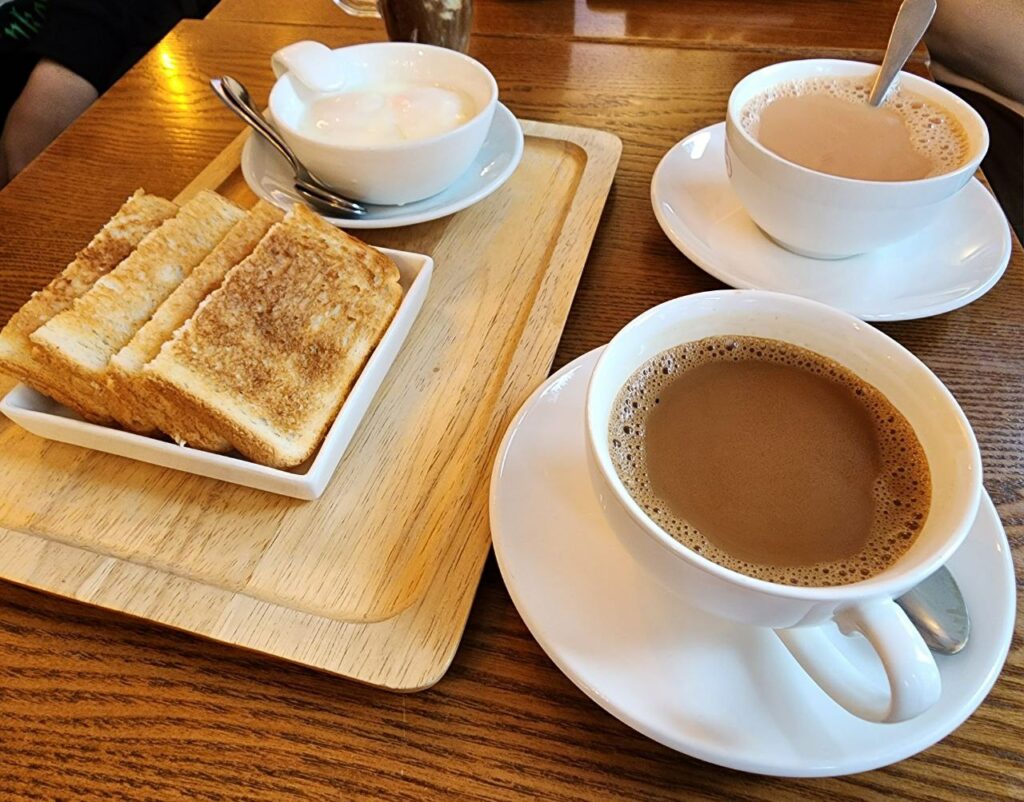
Kaya Toast is not just a dish; it’s a beloved Singaporean breakfast ritual. This simple snack consists of lightly toasted bread slathered with kaya—a coconut and egg jam—topped with a slice of butter. It’s often served with soft-boiled eggs drizzled with soy sauce, and a cup of kopi (coffee) or teh (tea).
Kaya toast has its origins in the early coffee shops of Singapore, where it became a breakfast favorite. For a quintessential experience, visit Ya Kun Kaya Toast, a coffeehouse chain that has been serving this local treat since 1944.
Char Kway Teow
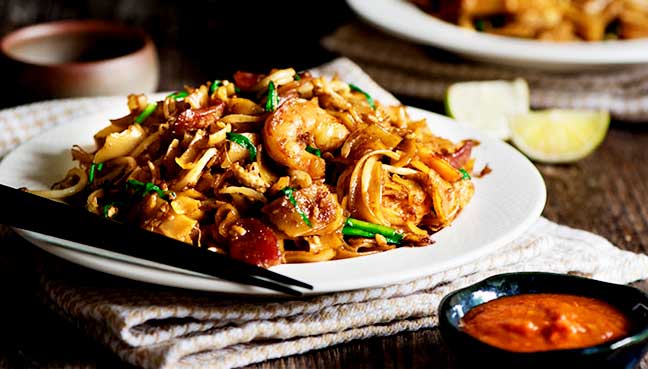
Char Kway Teow is the ultimate expression of Singapore’s street food culture. Made from flat rice noodles stir-fried with eggs, cockles, Chinese sausage, bean sprouts, and a sweet soy sauce, this dish is a rich, smoky, and hearty meal. The use of pork lard for frying gives it its signature flavor, while the addition of cockles provides an extra layer of umami.
This dish is best enjoyed at hawker centers, where the heat from the wok, known as ‘wok hei’, imparts an intense, smoky aroma that’s hard to replicate at home. It’s a perfect representation of Singapore’s street food: bold, flavorful, and made with humble ingredients.
Nasi Lemak
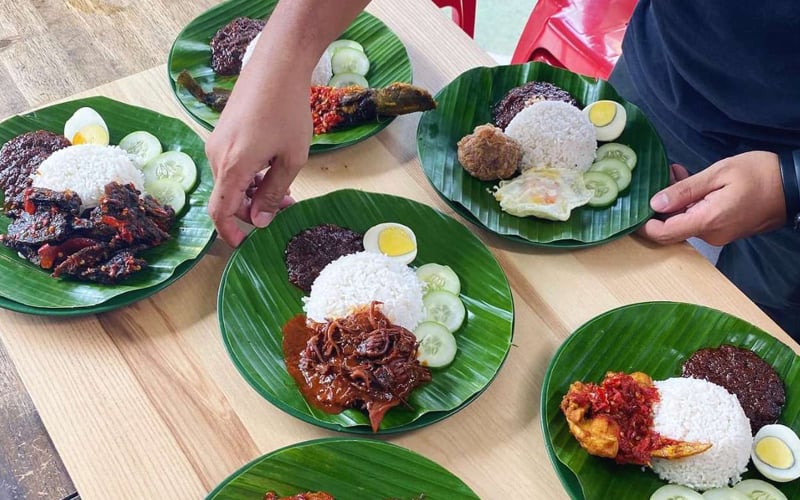
Nasi Lemak is another local favorite, featuring coconut rice served with a medley of sides like fried chicken or fish, a hard-boiled egg, crispy anchovies, peanuts, and a dollop of sambal (chili paste). The rich, aromatic rice cooked in coconut milk is the star of the show, balanced by the heat of the sambal and the crispiness of the fried elements.
There are many regional variations of Nasi Lemak in Singapore, with each hawker center or restaurant putting their own twist on the dish. Some versions offer spiced fried chicken, while others go for a simpler, more traditional approach with just fried fish and peanuts.
Hokkien Prawn Mee

Hokkien Prawn Mee is a hearty noodle dish born out of Singapore’s Chinese Hokkien community. It’s made with yellow noodles and rice noodles stir-fried in a rich, flavorful prawn stock. The dish is garnished with prawns, squid, eggs, and often served with sambal and a squeeze of lime for an added punch.
While both Singapore and Malaysia have their own versions of Hokkien Mee, the Singaporean version tends to be lighter and drier compared to the Malaysian variant, which is darker due to the use of soy sauce.
Laksa

Laksa is one of Singapore’s most iconic dishes, blending Chinese and Malay culinary traditions to create a rich, spicy noodle soup that’s a must-try for any visitor. The most popular version, Katong Laksa, features short rice noodles in a coconut-based soup flavored with shrimp paste, chili, and lemongrass. Topped with shrimp, cockles, and fish cakes, this creamy, spicy delight is comfort in a bowl.
If you’re looking to indulge, head over to 328 Katong Laksa, where you can slurp up this delicious dish with nothing but a spoon.
Chili Crab

No discussion of Singaporean cuisine is complete without Chili Crab, the dish that has gained international fame as one of Singapore’s signature foods. This spicy, tangy dish features large crabs stir-fried in a rich sauce made from chili, tomato, and egg, creating a sauce that’s perfect for dipping with mantou (fried buns). Despite its name, chili crab is not overwhelmingly spicy—it’s a perfect balance of sweet, savory, and just a hint of heat.
For the best experience, visit places like Jumbo Seafood or Long Beach Seafood, where this dish is an absolute must-try for seafood lovers.
Best Local Food in Singapore: Snacks and Light Bites
Tutu Kueh & Putu Piring

These delicate, steamed rice flour cakes are a delightful snack with roots in Singapore’s past. Tutu Kueh and its cousin, Putu Piring, share the same base—steamed rice flour with a sweet filling. However, there’s a slight difference: Tutu Kueh is typically filled with ground peanuts or grated coconut, while Putu Piring is filled with sweet gula melaka (palm sugar). Both versions are often served on a piece of pandan leaf, which gives the cakes an extra fragrant aroma.
The best places to try Putu Piring include the famous Haig Road Putu Piring stall, a Michelin-recognized street food gem that has been serving this traditional treat for decades. For Tutu Kueh, look for street stalls at places like Tiong Bahru Market, where the process of steaming the kueh right in front of you is part of the experience!
Goreng Pisang
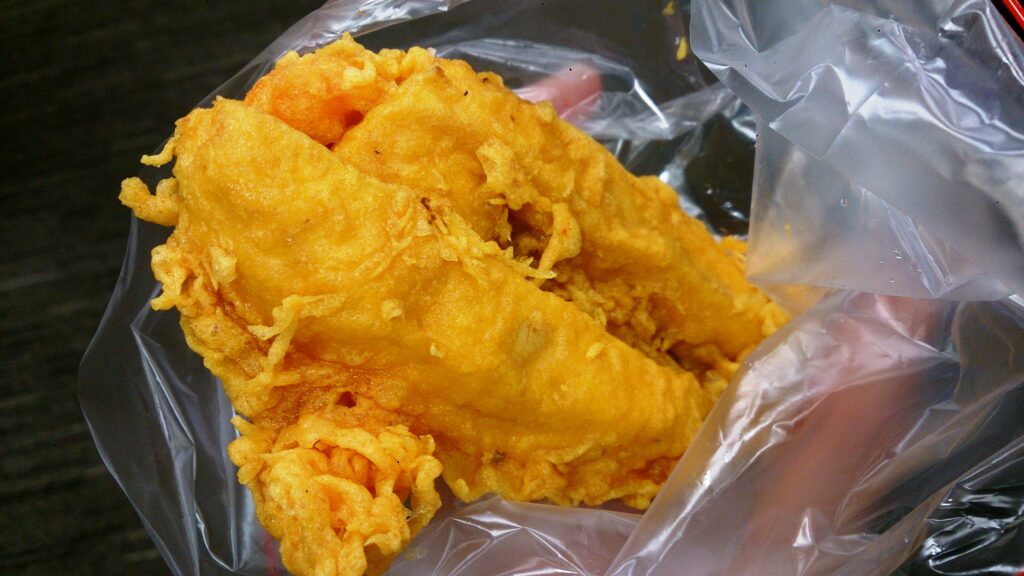
If you’re wandering the streets of Singapore and need a quick bite, nothing hits the spot like Goreng Pisang. These crispy, golden banana fritters are a favorite local snack, often found at hawker centers and food stalls. The appeal? It’s simple—deep-fried ripe bananas encased in a light, crispy batter, with the soft, sweet banana inside providing the perfect contrast to the crunchy outer layer.
This snack is a favorite among locals not only for its delicious flavor but also because it’s easy to grab on the go. Goreng Pisang is best enjoyed fresh from the fryer, and you can find some of the best versions at stalls like Boon Pisang Goreng in Clementi or hawker centers like Maxwell Food Centre.
Nyonya Kueh

Nyonya Kueh are colorful, bite-sized sweets that hold special significance in Peranakan culture, a blend of Chinese and Malay traditions. These beautifully crafted treats are often enjoyed during celebrations, festivals, or even as an afternoon snack. Each type of kueh is not only a delight to eat but also carries cultural meaning, reflecting the traditions of the Peranakan community.
Popular types of Nyonya Kueh include Kueh Lapis, a soft, layered cake made from rice flour, coconut milk, and pandan, and Kueh Salat, which features a layer of glutinous rice topped with creamy, pandan-flavored custard. These sweets are known for their intricate preparation and vibrant colors, often requiring hours of labor and love to perfect.
To indulge in authentic Nyonya Kueh, head to places like HarriAnns Nonya Table or Bengawan Solo, both well-known for their traditional, handmade kueh.
Popiah
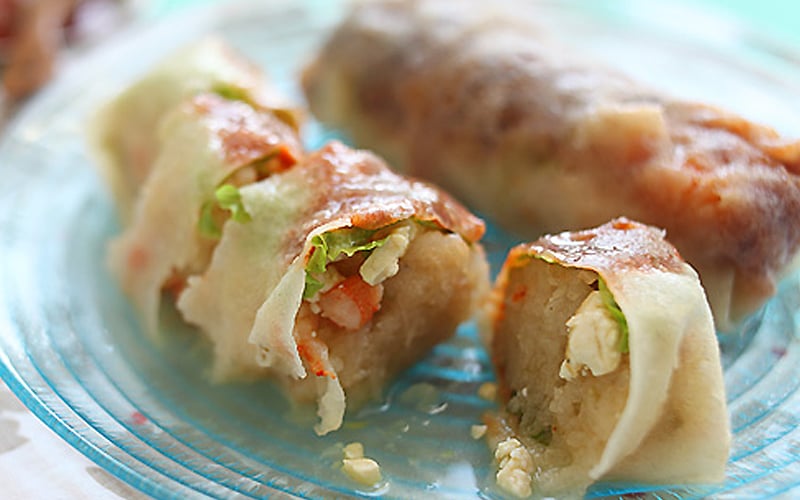
Popiah is Singapore’s version of a fresh spring roll, and what makes it truly unique is its mixture of textures and flavors. Wrapped in a thin wheat skin, Popiah is typically filled with a mix of finely grated turnip, carrots, lettuce, eggs, peanuts, and sometimes shrimp or Chinese sausage. The filling is cooked to perfection, offering a juicy yet crunchy bite, while the wrapper remains soft and slightly chewy.
What sets Singapore’s Popiah apart from similar rolls in other parts of Southeast Asia is the meticulous preparation of the fillings and the addition of a sweet hoisin sauce, which gives the dish an extra layer of flavor. You can find some of the best Popiah at Qi Ji, a local favorite, or Kway Guan Huat, a heritage shop that has been hand-rolling Popiah for over 80 years.
Curry Puff
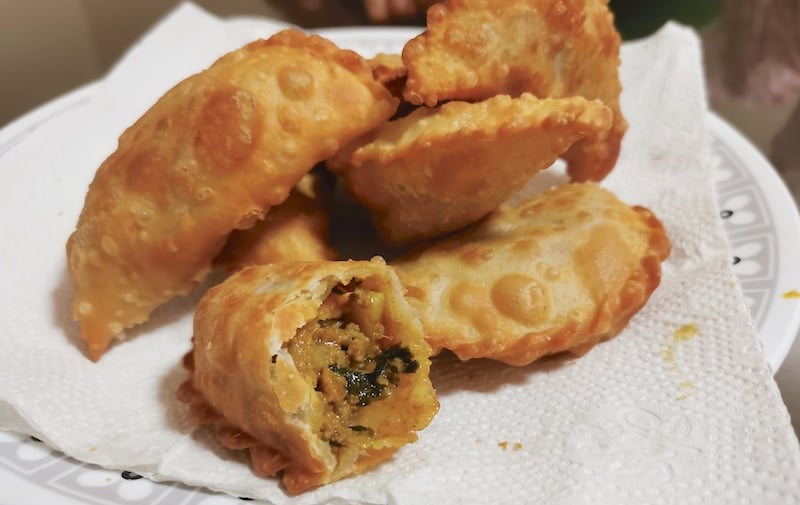
The Curry Puff is a small, pastry snack packed with flavor and is loved by locals for its hearty fillings and flaky crust. While the fillings can vary, the most traditional version is filled with spiced potatoes, chicken, and a hard-boiled egg, all encased in a buttery, golden pastry shell. Other variations include sardine and even sweet durian.
For the best Curry Puffs in Singapore, look no further than Old Chang Kee, a household name that has been serving this snack since 1956. Their curry puffs are famous for their perfectly flaky crust and generous fillings, making them the go-to spot for locals and expats alike.
Best Local Food in Singapore: Desserts and Drinks
Ice Kacang

A dessert that’s both colorful and refreshing, Ice Kacang has a long history in Singapore, evolving from a humble roadside treat to a popular dessert in hawker centres across the island. Originally just shaved ice topped with red beans (hence the name “kacang,” which means bean in Malay), this dessert has since become an explosion of flavors and textures.
Today, Ice Kacang is a mountain of finely shaved ice drizzled with brightly coloured syrups, evaporated milk, and sometimes sweet corn or grass jelly. Hidden beneath the ice are treasures like red beans, palm seeds, agar-agar, and attap chee (palm fruit). It’s the perfect way to cool down on a hot Singapore day, and you’ll find it at most hawker centres, with each stall adding its own unique twist.
Chendol
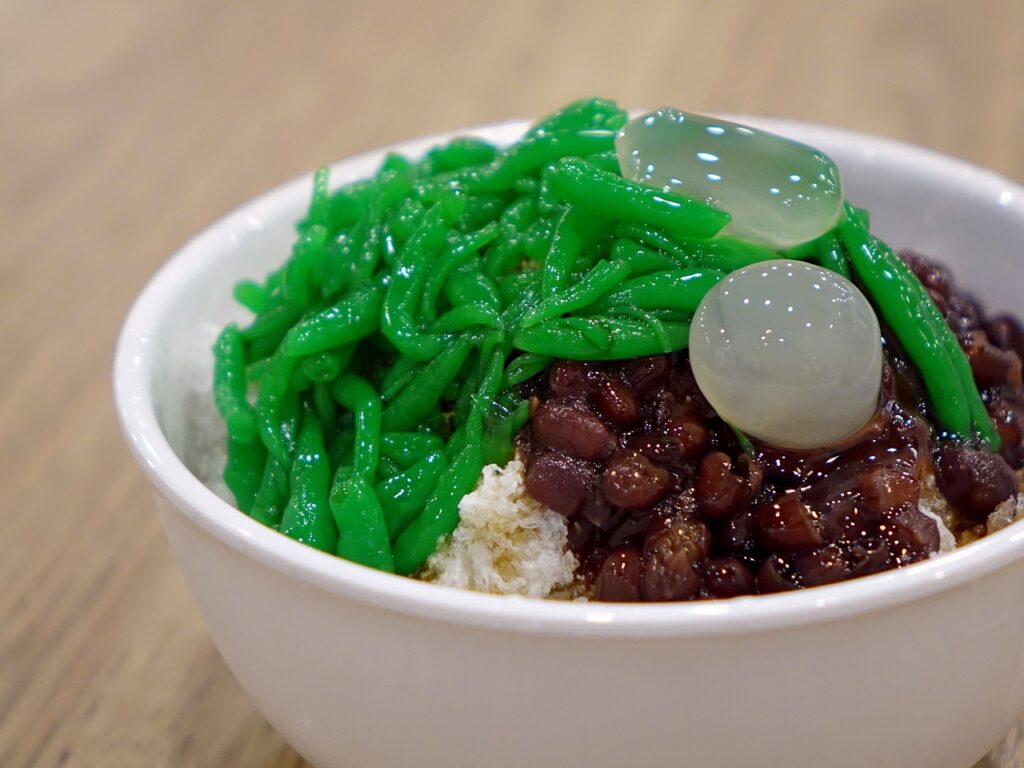
Another crowd-pleasing dessert is Chendol, a traditional sweet treat made from shaved ice, coconut milk, pandan-flavored green jelly noodles, gula melaka (palm sugar), and sometimes red beans or sweet corn. It’s served in a bowl or glass and offers a combination of creamy, sweet, and refreshing flavors, ideal for cooling off in Singapore’s tropical heat.
While Chendol can be found across Southeast Asia, what sets the Singaporean version apart is its balance of sweetness and richness, with generous use of fresh coconut milk and gula melaka. In Malaysia, for instance, Chendol tends to be sweeter with more gula melaka, while the Indonesian version might include more toppings like jackfruit. Despite these subtle differences, each country brings its own take to this much-loved dessert.
Teh Tarik
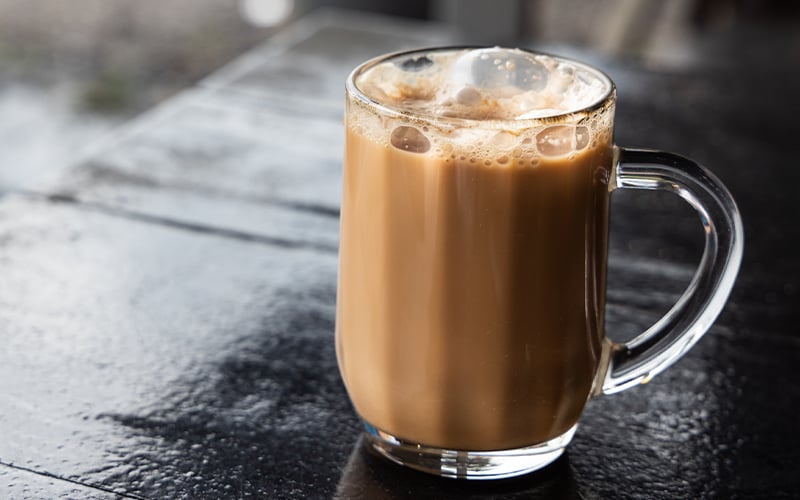
The humble yet beloved Teh Tarik, which translates to “pulled tea” in Malay, is a cornerstone of Singapore’s drink culture. This frothy, milky tea is prepared by pouring the tea mixture back and forth between two containers, creating a “pulling” effect that aerates the drink and gives it a delightful frothy top.
Teh Tarik holds cultural significance, especially among Singapore’s Indian Muslim community, where it’s often enjoyed with breakfast or as a mid-day refreshment. The pulling technique not only cools the tea to the perfect drinking temperature but also enhances the flavor by blending the tea with sweetened condensed milk. You’ll find this drink served at coffee shops (kopitiams) and hawker centers all over Singapore, usually paired with snacks like Roti Prata or Kaya Toast.
Sugar Cane Juice
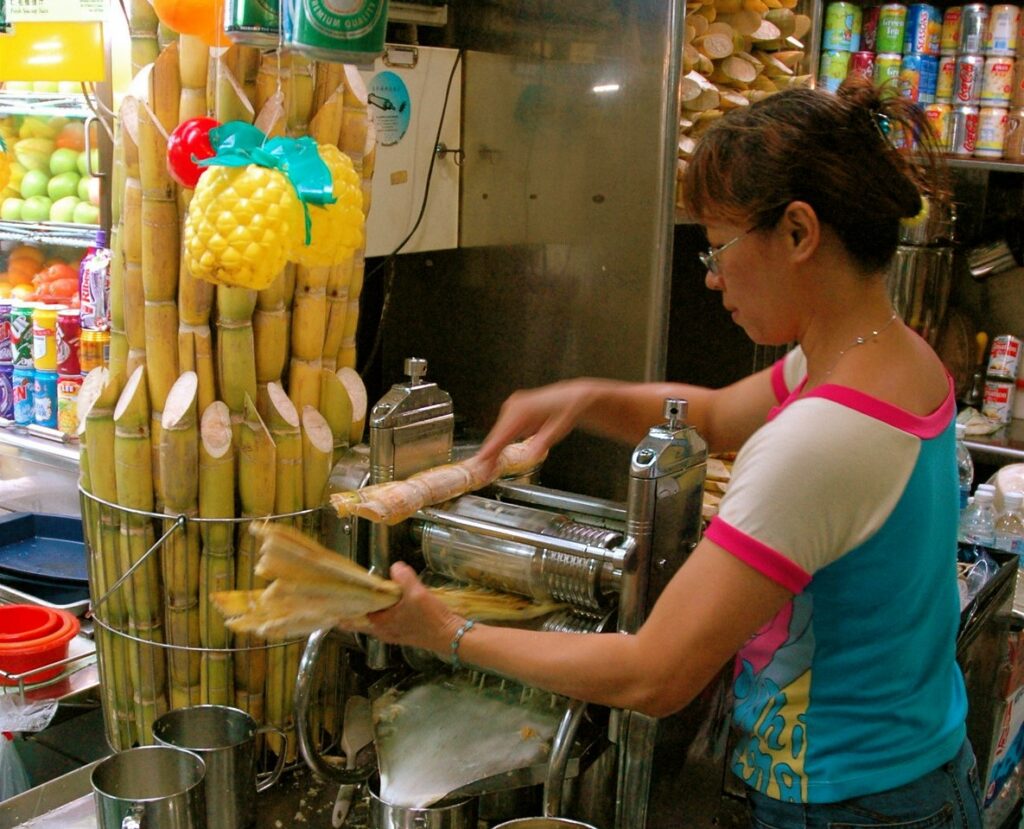
You can’t walk through a hawker centre in Singapore without noticing the large machines pressing fresh sugar cane juice. This refreshing drink has been popular in Singapore for decades, especially because of its health benefits. Sugar cane juice is packed with antioxidants, vitamins, and electrolytes, making it an excellent natural energy booster.
At hawker centres, sugar cane stalks are freshly pressed through powerful machines right in front of you, ensuring the juice is as fresh as possible. It’s usually served cold with ice, providing a sweet yet light flavor that’s perfect for the tropical weather. Despite its sweet taste, sugar cane juice has a low glycemic index, making it a healthier alternative to many sugary drinks.
Milo Dinosaur

For something indulgent and uniquely Singaporean, there’s Milo Dinosaur—a drink that has become a local cult favorite. This rich beverage consists of ice-cold Milo, a chocolate malt powder mixed with milk, topped with an extra heap of Milo powder for that signature “dinosaur” effect. It’s decadent, sweet, and a hit with both children and adults.
The origins of Milo Dinosaur can be traced back to Singapore’s local coffee shops, where creative baristas began adding extra Milo powder as a playful twist on the classic drink. Over time, other variations have popped up, including the Milo Godzilla, which adds a scoop of vanilla ice cream for an even more indulgent treat. You can find these drinks at most kopitiams and hawker centres across the island.
Where to Eat in Singapore: Places to Dine Like a Local
- Exploring Hawker Centres
When it comes to dining like a true local in Singapore, nothing compares to the experience of visiting a hawker centre. These bustling hubs of culinary activity are where you’ll find some of the city’s best local food at affordable prices, surrounded by an authentic slice of daily life. Let’s dive into a few of the most iconic hawker centres you should explore.
- Maxwell Food Centre

One of the most famous hawker centres in Singapore, Maxwell Food Centre is steeped in history and charm. Located in the heart of Chinatown, it has been a beloved destination for both locals and tourists since the 1950s. Once a wet market, it transformed into a food haven, offering a diverse range of Singaporean dishes under one roof.
Maxwell is best known for Tian Tian Chicken Rice, which earned international fame after being featured by the late Anthony Bourdain. Their Hainanese chicken rice is perfectly tender, paired with fragrant rice and a trio of dipping sauces that make this dish unforgettable. Another must-try is the Maxwell Fuzhou Oyster Cake, a crispy, savory fritter packed with fresh oysters, pork, and prawns—a rare find in Singapore and a true local delicacy.
- Old Airport Road Food Centre

If you’re looking to explore a hawker centre with deep local roots, Old Airport Road Food Centre is where you need to go. This iconic food hub, located in the eastern part of Singapore, has been serving up hawker fare since the 1970s and is beloved by locals for its wide variety of traditional dishes.
Here, you’ll find legendary stalls like Nam Sing Hokkien Fried Mee, known for their delicious Hokkien Prawn Mee, and Xin Mei Xiang Lor Mee, famous for their rich, flavorful Lor Mee. For a sweet finish, don’t miss the Roast Paradise stall for their melt-in-your-mouth char siew (barbecued pork). To navigate like a local, go early—queues start forming by lunchtime, and the best dishes sell out fast!
- Lau Pa Sat

For a unique blend of history, architecture, and street food, Lau Pa Sat is a must-visit. This stunning Victorian-era building, with its intricate cast-iron structure, houses an eclectic mix of food stalls by day, but by night, it transforms into Satay Street.
From 7:00 p.m.onwards, Boon Tat Street (just beside Lau Pa Sat) becomes a bustling stretch lined with satay stalls, filling the air with the irresistible aroma of grilled skewers. Whether you’re craving chicken, beef, or prawn satay, this is the place to be. For the best experience, visit after sunset when the street comes alive, and pair your satay with a cold drink to soak in the lively atmosphere.
- Popular Local Restaurants
Hawker centres are just one part of Singapore’s food scene. For those looking to dine in style, there are also plenty of local restaurants that serve up beloved dishes in a more refined setting.
- JUMBO
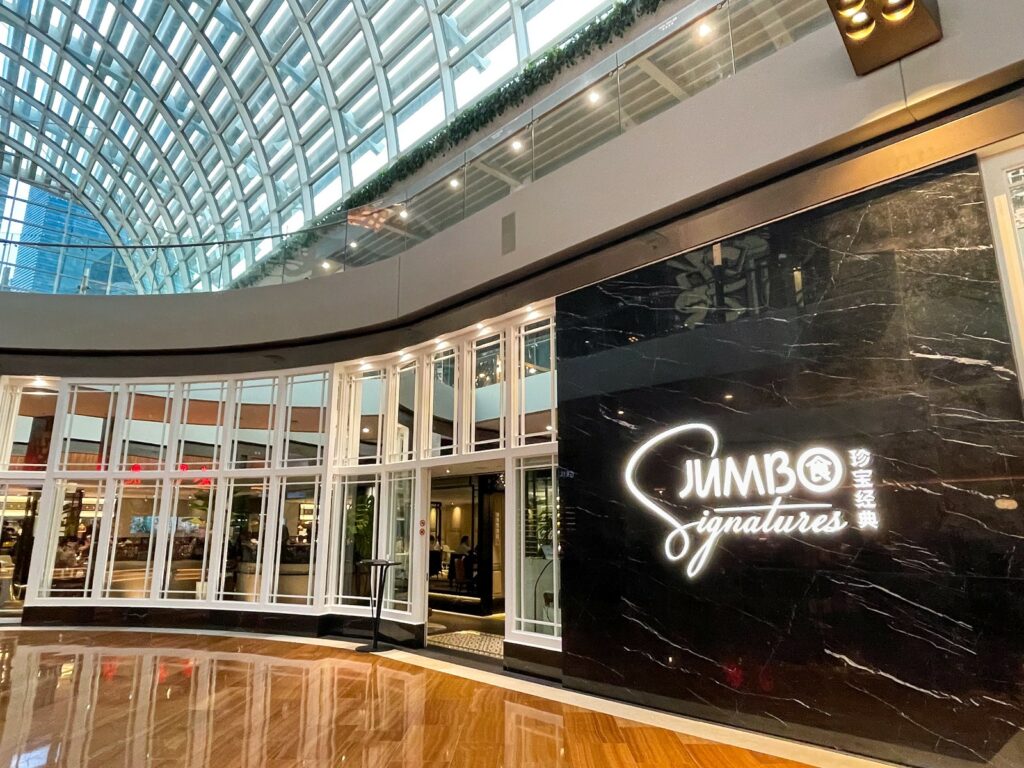
A staple in the Singapore food scene, JUMBO is best known for its award-winning Chili Crab, a dish that has gained international acclaim. The restaurant has several outlets across the city, but for an authentic experience, head to their riverside location along Clarke Quay for a meal with a view. Aside from their famous Chili Crab, JUMBO’s Black Pepper Crab is also a must-try—bold, spicy, and unforgettable. This iconic restaurant is perfect for both locals and visitors wanting to savor a truly Singaporean dish in a lively atmosphere.
- Spago Dining Room

For a modern, elevated take on Singaporean cuisine, Spago Dining Room at Marina Bay Sands is the perfect spot. Helmed by celebrity chef Wolfgang Puck, the restaurant offers innovative twists on classic dishes. Here, you can expect Laksa spring rolls, a creative interpretation of the beloved noodle soup, and a fine-dining version of Hainanese Chicken Rice that reimagines this traditional dish for the modern palate. With its stunning rooftop views and Michelin-starred pedigree, Spago is a must-visit for foodies looking to experience local flavors in a contemporary setting.
- Toast Box
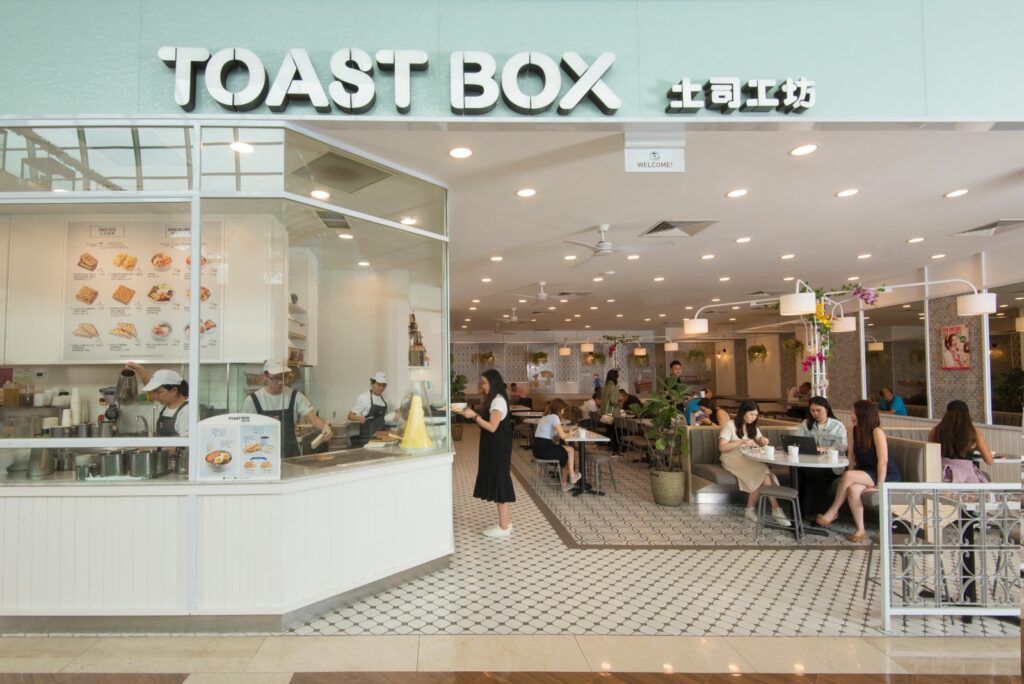
Looking for a classic Singaporean breakfast with a modern twist? Toast Box offers just that, with traditional dishes served in a bright, cozy café environment. For a quintessential breakfast experience, order the Kaya Toast Set—a combination of crispy toast slathered with sweet kaya (coconut jam) and butter, soft-boiled eggs drizzled with soy sauce, and a steaming cup of kopi (local coffee). While Toast Box preserves the flavors of the past, it presents them in a way that’s convenient for today’s busy crowd, making it a go-to spot for both locals and expats alike.
Hidden Gems: Lesser-Known Local Eateries
When it comes to Singapore’s culinary scene, there are some truly special spots that often fly under the radar. These lesser-known local eateries, frequented by locals in the know, offer a treasure trove of authentic flavors that capture the heart of Singapore’s rich food culture. Whether it’s a family-run hawker stall passed down through generations or a quirky off-the-beaten-path restaurant, these hidden gems are well worth seeking out.
- Under-the-Radar Spots Loved by Locals
- Small & Family-Run Hawker Stalls

Singapore is filled with family-run hawker stalls that have stood the test of time, quietly serving some of the best local food you’ll find in the city. These stalls often operate under the radar, far from the tourist hotspots, but their authentic flavors and traditional cooking techniques keep locals coming back for more.
One such hidden gem is Hill Street Fried Kway Teow, tucked away at the Chinatown Complex Food Centre. This small stall has been dishing out its famous char kway teow—a stir-fried noodle dish packed with wok hei (smoky flavor)—for decades. The owner, Mr. Lim, is a master of his craft, carefully balancing the noodles, cockles, Chinese sausage, and eggs to create a harmonious plate that’s rich, flavorful, and just the right amount of greasy. It’s this attention to detail that earned him a Michelin Bib Gourmand award, despite the humble nature of his stall.
Another gem worth seeking out is Heng Kee Curry Chicken Noodle at Hong Lim Food Centre. This small stall specializes in an incredibly flavorful curry chicken noodle soup, made from a secret family recipe. The combination of tender chicken, potatoes, and yellow noodles swimming in a fragrant, mildly spicy curry broth will leave you craving more.
- Off-the-Beaten-Path Restaurants
For those who enjoy venturing off the beaten path, Singapore has a plethora of unique dining spots tucked away in lesser-known areas. These restaurants offer a different perspective on local cuisine, often blending traditional recipes with modern twists or featuring niche ingredients.
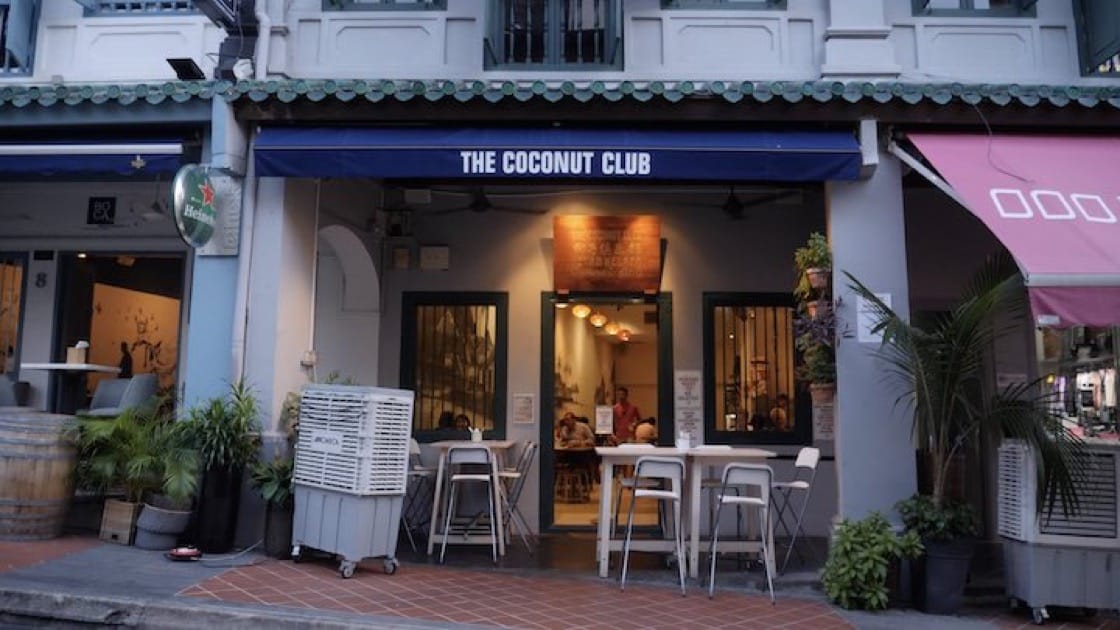
One such place is The Coconut Club, located away from the bustling city centre in the quieter Ann Siang Hill area. This restaurant focuses on one thing, and one thing only: nasi lemak. But it’s not just any nasi lemak—their coconut rice is made using freshly pressed coconut milk, and the quality is evident in every bite. Paired with crispy fried chicken, homemade sambal, and perfectly cooked eggs, this dish is simplicity done exceptionally well. The Coconut Club has even garnered attention from food critics and was visited by Singapore’s Prime Minister during a state lunch with Barack Obama.
For a truly off-the-beaten-path experience, head to Keng Eng Kee Seafood in Bukit Merah, a family-run restaurant that’s been serving traditional zi char dishes (Chinese home-style cooking) for more than 50 years. The restaurant’s famous Moonlight Hor Fun, a flat rice noodle dish stir-fried with a raw egg and dark soy sauce, is a must-try for those seeking authentic, hearty flavors. While it may not be located in a glamorous area, Keng Eng Kee is a favorite among locals who appreciate the no-frills atmosphere and consistently delicious food.
If you’re in the mood for something a bit more contemporary, The Disgruntled Chef at Dempsey Hill is a hidden gem worth checking out. Tucked away in a quieter part of Singapore, this chic restaurant blends modern techniques with local ingredients, resulting in innovative dishes like their crab cakes with chili crab sauce—a modern twist on the iconic Singaporean dish. Dempsey Hill’s lush, tranquil setting is the perfect backdrop for a relaxing meal away from the hustle and bustle of the city.
Tips for Ordering and Eating Like a Local
When in Singapore, eating at a hawker centre is more than just grabbing a meal—it’s an experience. Locals have mastered the art of navigating these bustling food hubs, and with a few insider tips, you can eat like a true Singaporean and make the most of your hawker adventure.
Navigating Hawker Centres

Hawker centres can be overwhelming at first, with rows of food stalls, different aromas wafting through the air, and hungry diners everywhere. But don’t worry—once you know the drill, it’s a breeze.
First, find a table. This can be tricky during peak hours, especially at popular centres like Maxwell Food Centre or Old Airport Road. Locals use a unique method to reserve tables—simply place a packet of tissues or an umbrella on the table to signal that it’s taken. This is known as “chope-ing” a table. Once you’ve secured your spot, you’re free to roam around and explore the food stalls.
Next, order your food. Hawker stalls typically have a simple menu displayed on large boards above their counters, with pictures and prices. It’s common to order directly from the stall owner. Just tell them what you want, and whether you’re dining in or taking it away. If you’re unsure about a dish, don’t hesitate to ask—they’re usually happy to explain!
Payment is generally done after you order. Most hawker stalls are cash-only, so it’s a good idea to have small notes and coins on hand. Larger hawker centres may have a returnable tray deposit system, so check if you need to place a small deposit for your tray.
Once you have your food, head back to your “chope-ed” table and enjoy! Some stalls will deliver your food to your table after you order—if that’s the case, you’ll need to mention your table number when ordering.
Understanding Local Etiquette

Eating like a local also means following a few basic etiquette rules that will help you blend in:
- Return your trays: It’s considered polite to return your tray and dishes to the designated return points after finishing your meal. While some hawker centres have cleaners to help with this, doing your part keeps the space tidy for the next diners.
- Share tables: If hawker centres are crowded, don’t be surprised if you end up sharing a table with strangers. It’s completely normal in Singapore, and no one will bat an eye!
- Queue politely: Singaporeans take queuing very seriously, especially at popular stalls. If you see a long line, it usually means the food is worth the wait. Just join the queue and wait your turn patiently—cutting in line is a big no-no.
Common Phrases and Terms

Mastering a few local phrases and food terms will not only make ordering easier but also impress the stall owners with your effort to speak like a true Singaporean. Here are some essential phrases to get you started:
- “Auntie” or “Uncle”: These are terms of respect commonly used to address older hawker stall owners. Don’t worry, it’s perfectly normal to use them, even if they’re not your relatives!
- “Da bao”: This means “take away” in Chinese. If you want your meal to go, just say “da bao” after ordering.
- “Kopi”: Singapore has its own coffee culture. Kopi means coffee, and it comes in many varieties. If you want it with condensed milk, ask for kopi, but if you want it black with sugar, it’s kopi o. If you don’t want sugar, say kopi o kosong.
- “Teh”: For tea, use teh. Similar to kopi, teh can come with different levels of sweetness and milk. Teh tarik is the famous “pulled tea,” and if you prefer tea without sugar, ask for teh kosong.
- “Tarik”: This means “pull,” and it refers to the technique used to aerate Teh Tarik by pouring it between two containers. This gives the tea its signature frothy top.
Singapore Food Map – Finding Hawker Centres Near Me

Looking for a nearby hawker centre? The OneMap website, provided by the Singapore Government, is a handy tool that provides official, location-based information on nearby hawker centres, making it easier than ever to enjoy local food. Simply enter your current location, and the map will guide you to the closest hawker centre.
In addition to food, you can also use OneMap to find schools, medical centres, and other essential services. It’s a convenient, user-friendly resource for both locals and expats alike!
Conclusion
Singapore’s food culture is a rich blend of diverse flavors, reflecting its multicultural heritage. From hawker favorites like Hainanese Chicken Rice to hidden gems like Popiah, the variety of dishes is endless. Whether you’re a foodie or simply curious, exploring the local food scene is a must. Share your favorite dishes or experiences with us, and don’t forget to try something new during your culinary journey in Singapore!




